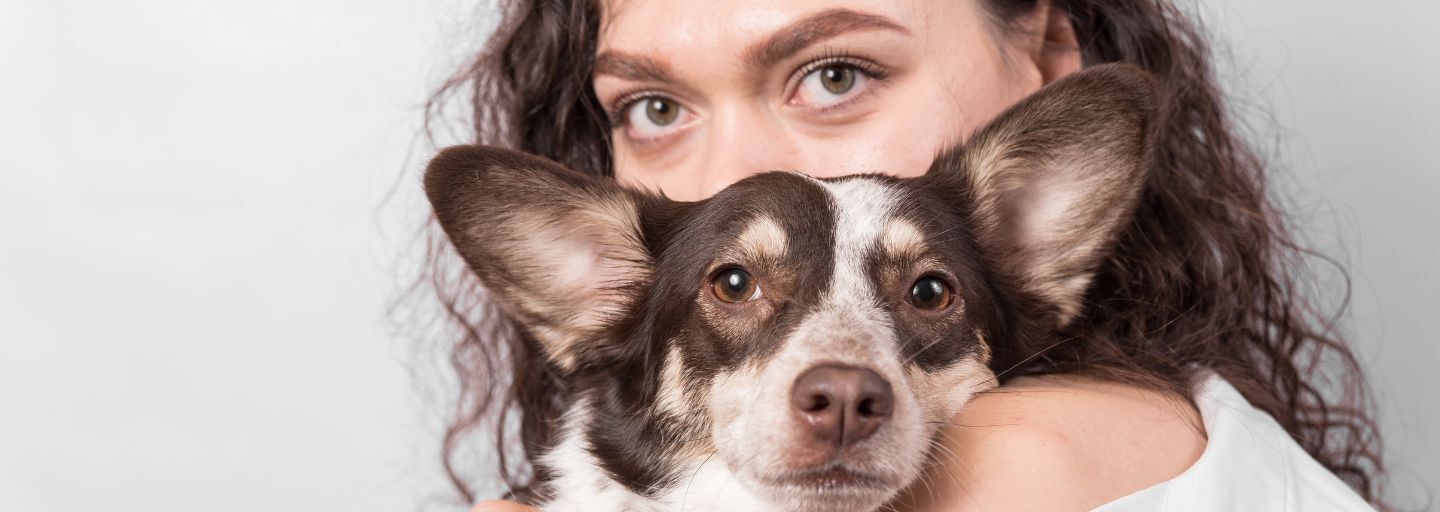Have you ever wondered how dogs perceive the world around them? While we share the same environment with our furry friends, their view of the world is quite different from ours.
Spotting movement
Dogs have forward-facing eyes, allowing them to detect movement ahead of them. In low-light conditions, their pupils can dilate, and they possess a reflective layer called the tapetum, which aids their vision at dusk and dawn. Contrary to popular belief, dogs do not have perfect vision. In fact, they may struggle to focus on objects in great detail, perceiving the world as slightly blurry. So when you stand across the park from your dog, they may have difficulty focusing on you.
To get your dog's attention, it's more effective to move around. When giving commands, using gestures with your arms and hands can help dogs understand your intentions. They can visually follow pointing gestures, but adding a verbal command can further enhance their understanding.
Are dogs color-blind?
Dogs are not entirely color-blind, but they do see colors differently compared to humans. They have fewer cones, the light-sensitive cells responsible for perceiving color. Humans have three types of cones, allowing us to see a wide range of colors, while dogs only have two.
In color-discrimination tests, dogs can distinguish shades of yellow, blue, and gray. While we might see their toy as a vibrant red, they perceive it as a dull gray. However, they have a more heightened ability to see shades of gray due to their higher number of rods, which are light-sensitive cells.
Can dogs recognize faces?
Dogs recognize their owners through a combination of visual and scent cues, as well as familiarity with our behavior. They are highly attuned to our facial features and pay more attention when they can see our faces.
In turn, we can become attuned to our dogs' expressions. Notice how when you greet your dog after being apart, they raise their left eyebrow? When dogs are frightened, you may observe a furrowed brow or see the whites of their eyes as they turn their heads away to avoid the situation.
Do dogs watch TV?
Dogs can see images on a TV screen, but their ability to detect and interpret those images varies based on their individual interest, breed, and the frequency of the images. Some dogs may notice the movement of animals on the screen, while others will simply sit by your side contentedly as you watch your favorite program.
Can dogs recognize themselves in a mirror?
Puppies often react to their reflection in a mirror as if it were another dog. However, with time, they lose interest and no longer interact with their reflection. This suggests that dogs may not have the ability to recognize themselves, or it could be that they are simply not motivated by visual stimuli. Perhaps they are not as vain as us humans!
Do dogs mind going blind?
As dogs age, their senses, including sight, often deteriorate. Alternatively, dogs may lose their vision due to injury or medical conditions. Dogs heavily rely on their other senses, such as smell and hearing, so losing their sight is not as devastating for them as one might think. Keeping their environment consistent, avoiding furniture rearrangements, and taking care during walks or interactions with other dogs can help them adapt.
Eye color
We all adore those big, brown, soulful eyes that dogs have. By default, dogs' eyes are brown in color. The eye color of your dog is determined by their genes. Domesticated dogs differ from their wolf ancestors, whose eyes came in various colors and shades.
While brown is the most common eye color, some dogs can have different eye colors. Liver-colored individuals may have lighter, amber eyes. Blue eyes are often associated with a lack of pigment in the coat and can occur in dogs with a merle gene or those with a significant amount of white on their coats and faces. Blue eyes can also be inherited as a separate gene and are commonly seen in Huskies. Additionally, some dogs may have one brown eye and one blue eye, creating a unique and striking appearance.
Understanding how dogs see the world provides us with valuable insights into their experiences and interactions. While their vision may differ from ours, dogs possess remarkable abilities to detect movement, recognize their owners, and navigate their surroundings using their other senses. By appreciating their unique perspective, we can deepen our connection with these amazing creatures and ensure their well-being by providing them with the care, attention, and environment they need to thrive. So the next time you gaze into your dog's eyes, remember that their view of the world is just as fascinating and meaningful to them as ours is to us.



